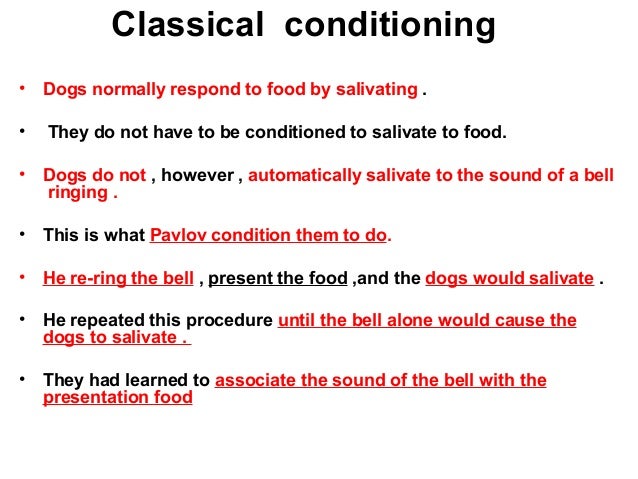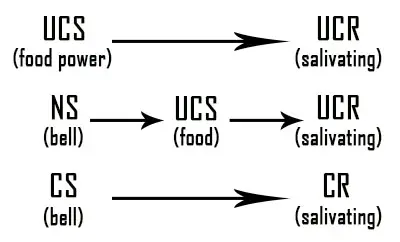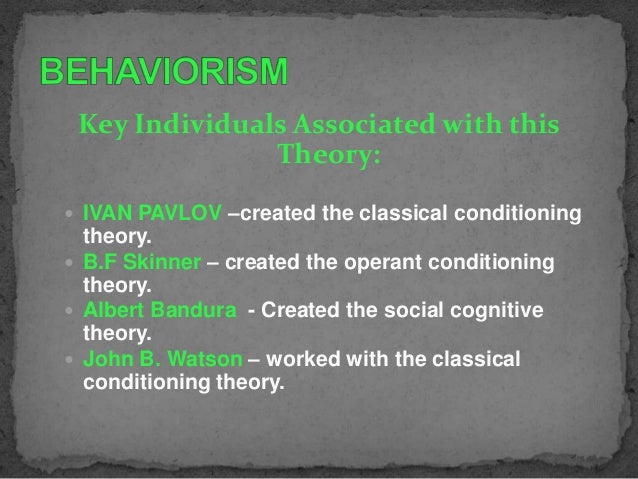

Furthermore, it is well-known that Pavlovian principles can influence human health, emotion, motivation, and therapy of psychological disorders. Most psychologists now agree that classical conditioning is a basic form of learning. These types of associations can lead to increased spending as well as poor eating habits especially if the product is unhealthy food. Advertisers can use music or mouth-watering food in their ads to create an association with their product. The advertiser generally attempts to get consumers to associate their product with a particular response or feeling so they are more likely to buy the product. A prominent example of this occurs in advertising. People can use classical conditioning to exploit others for their gain. Stimulus discrimination, on the other hand, is being able to differentiate between similar stimuli and respond only to the correct stimuli. For example, if Pavlov’s dogs salivated at the sound of another ringing sound such as a cell phone ringing, that would be stimulus generalization. Stimulus generalization occurs when the dog can respond to stimuli that are similar to the conditioned stimulus. Lastly, he found that stimulus generalization and stimulus discrimination can occur. Even if a substantial amount of time had passed, the conditioned response would easily recover if the neutral stimulus and the unconditioned stimulus were paired again. However, spontaneous recovery was also observed. Eventually, the dogs would stop salivating at the sound of the bell. In Pavlov’s experiment, this would translate to Pavlov ringing the bell without giving food to the dogs. If the conditioned stimulus is continuously supplied in the absence of the unconditioned stimulus, then the conditioned response becomes weaker and weaker until it disappears. Second, Pavlov observed that the conditioned response was vulnerable to extinction. In Pavlov’s experiment, this would translate to the time in between the bell ringing and the presentation of food. He found that the rate of acquisition, the initial stages of learning, depended on the noticeability of the stimulus and the time in between the introduction of the neutral stimulus and the unconditioned stimulus. Pavlov recorded several phenomena associated with classical conditioning. In this case, salivation was the response, but the unconditioned response was triggered by food, whereas the conditioned response was triggered by the bell which indicated the coming of food. Furthermore, it is important to realize that the unconditioned response and the conditioned response are the same except for which stimulus they are elicited by. It is important to note that the neutral stimulus becomes the conditioned stimulus. In the described experiment, the conditioned stimulus was the ringing of the bell, and the conditioned response was salivation. A conditioned stimulus is a stimulus that can eventually trigger a conditioned response. The dogs salivating for food is the unconditioned response in Pavlov’s experiment. An unconditioned response is an automatic response to a stimulus.

In Pavlov’s experiment, the food was the unconditioned stimulus.

An unconditioned stimulus is a stimulus that leads to an automatic response. Pavlov introduced the ringing of the bell as a neutral stimulus. A neutral stimulus is a stimulus that at first elicits no response. To understand classical conditioning, it is essential to be familiar with the following terms. However, eventually, the dogs began to salivate at the sound of the bell alone. At first, the dogs elicited no response to the bells. To test his theory, Pavlov set up an experiment in which he rang a bell shortly before presenting food to the dogs. Pavlov realized that they were salivating at the noises that were consistently present before the food arrived for example, the sound of a food cart is approaching. However, later they salivated slightly before their food arrived. At first, the dogs would only salivate when the food was placed in front of them.

Pavlov was conducting research on the digestion of dogs when he noticed that the dogs’ physical reactions to food subtly changed over time. Classical conditioning was stumbled upon by accident.


 0 kommentar(er)
0 kommentar(er)
